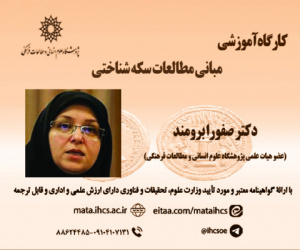ارزیابی نرخ فرسایش ورقه ای با استفاده از دندروژئومورفولوژی (مطالعه موردی: دربادام قوچان) (مقاله علمی وزارت علوم)
درجه علمی: نشریه علمی (وزارت علوم)
آرشیو
چکیده
فرسایش خاک، عامل اصلی روند تخریب زمین است که طی دوران های مختلف، در بسیاری از اکوسیستم های جهان اثرات قابل توجهی را بر جای گذاشته است. 75 درصد اراضی ایران در معرض فرسایش قرار دارد که حوضه آبریز دربادام در شمال شرق ایران نیز از این قاعده مستثنی نیست. در این پژوهش با هدف برآورد نرخ فرسایش ورقه ای از تکنیک دندروژئومورفولوژی بر روی ریشه های بیرون زده درختان ارس استفاده شده است. با استفاده از روش نمونه برداری انتخابی تعداد 28 نمونه دیسکی از ریشه درختان ارس برداشته شد. سپس با آنالیز ماکروسکوپی و میکروسکوپی ریشه ها در آزمایشگاه به طور دقیق سال بیرون زدگی ریشه از خاک بر اثر فرسایش ورقه ای مشخص شد. در آنالیز ماکروسکوپی شاخص تغییرات ناگهانی در عرض حلقه رشد و در آنالیز میکروسکوپی شاخص های تغییرات اندازه، تعداد و جهت گیری آوندها، اندازه لومن سلول ها و اندازه فیبرها اندازه گیری نشان از بیرون زدگی ریشه از خاک داشتند. نتایج نشان داد میزان فرسایش سالیانه کمتر از 1/0 میلی متر در سال بوده و میانگین فرسایش سالیانه در نمونه های تهیه شده از درختان با سن کم تر از 50 سال 52/0 میلی متر و برای درختان با عمر بین 50 تا 100 سال 33/0 میلی متر است که نشان دهنده تأثیر مثبت ریشه های درختان در نگهداشت خاک دارد. بیش ترین نرخ فرسایش سالانه در مراتع با پوشش فقیر و کم ترین میزان در جنگل با تاج پوشش کم ثبت شد. هم چنین نتایج نشان داد میان درجه شیب و میزان فرسایش ورقه ای رابطه مثبت وجود دارد. درنهایت مشخص شد تکنیک دندروژئوومورفولوژی روشی مناسب، کم هزینه و آسان برای برآورد نرخ فرسایش در مناطق دارای گونه درختی ارس است.Estimation of Sheet Erosion by Dendrogeomorphology Method
Erosion is the main factor in the process of land degradation, which has left significant effects in many ecosystems of the world during different eras. 75% of Iran's lands are subject to erosion, and the Darbadam catchment in northeast of Iran is no exception.In this research, dendrogeomorphology technique has been used on the exposed roots of juniper trees with the aim of estimating sheet erosion rate. Using selective sampling method, 28disc samples were done from the roots of juniper trees. Then, by macroscopic and microscopic analysis of the roots in the laboratory, the exact year of root exposed from the soil due to sheet erosion was determined. In the macroscopic analysis, the index of sudden changes in the width of the growth ring, and in the microscopic analysis, the indicators of the changes in the size, number and orientation of the vessels, the size of the lumen of the cells and the size of the fibers were measured indicating the exposed of the roots from the soil.The results showed that the annual erosion rate is less than 1 mm per year. The average annual erosion rate in trees less than 50 years old is 0.52 mm and for trees between 50 and 100 years old it is 0.33 mm which shows the positive effect of tree roots in soil protection. The highest annual erosion rate was recorded in pastures with poor coverage and the lowest rate in forests with low canopy cover. These results showed that there is a positive relationship between the degree of slope and the amount of sheet erosion. Finally, it was found that the technique of dendrogeomorphology is a suitable, low-cost and easy method for estimating the erosion rate in areas with juniper tree species.







